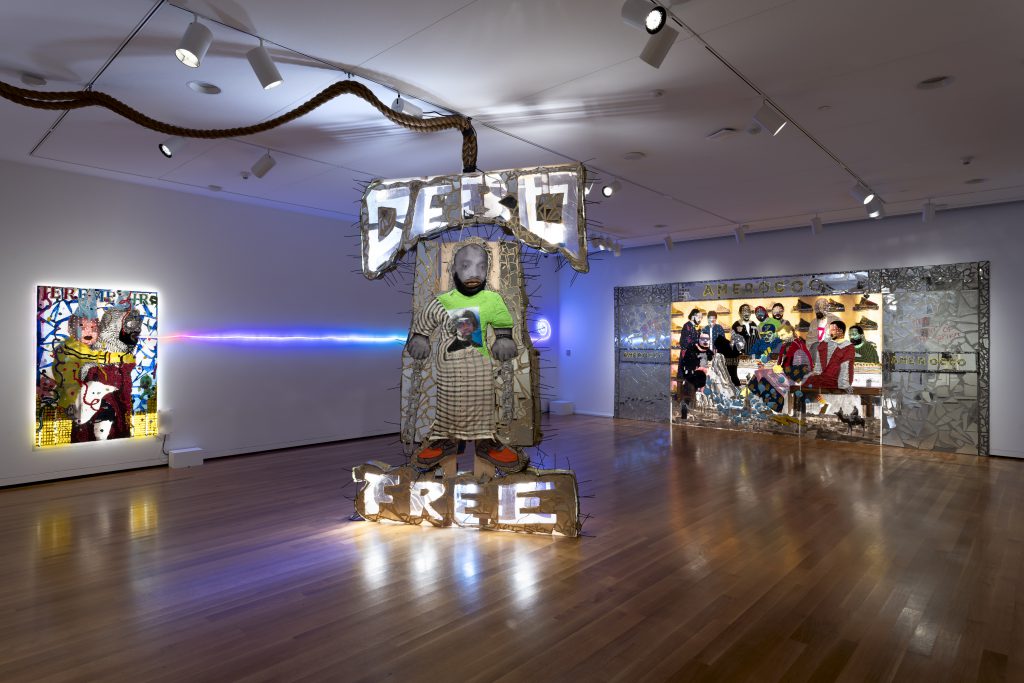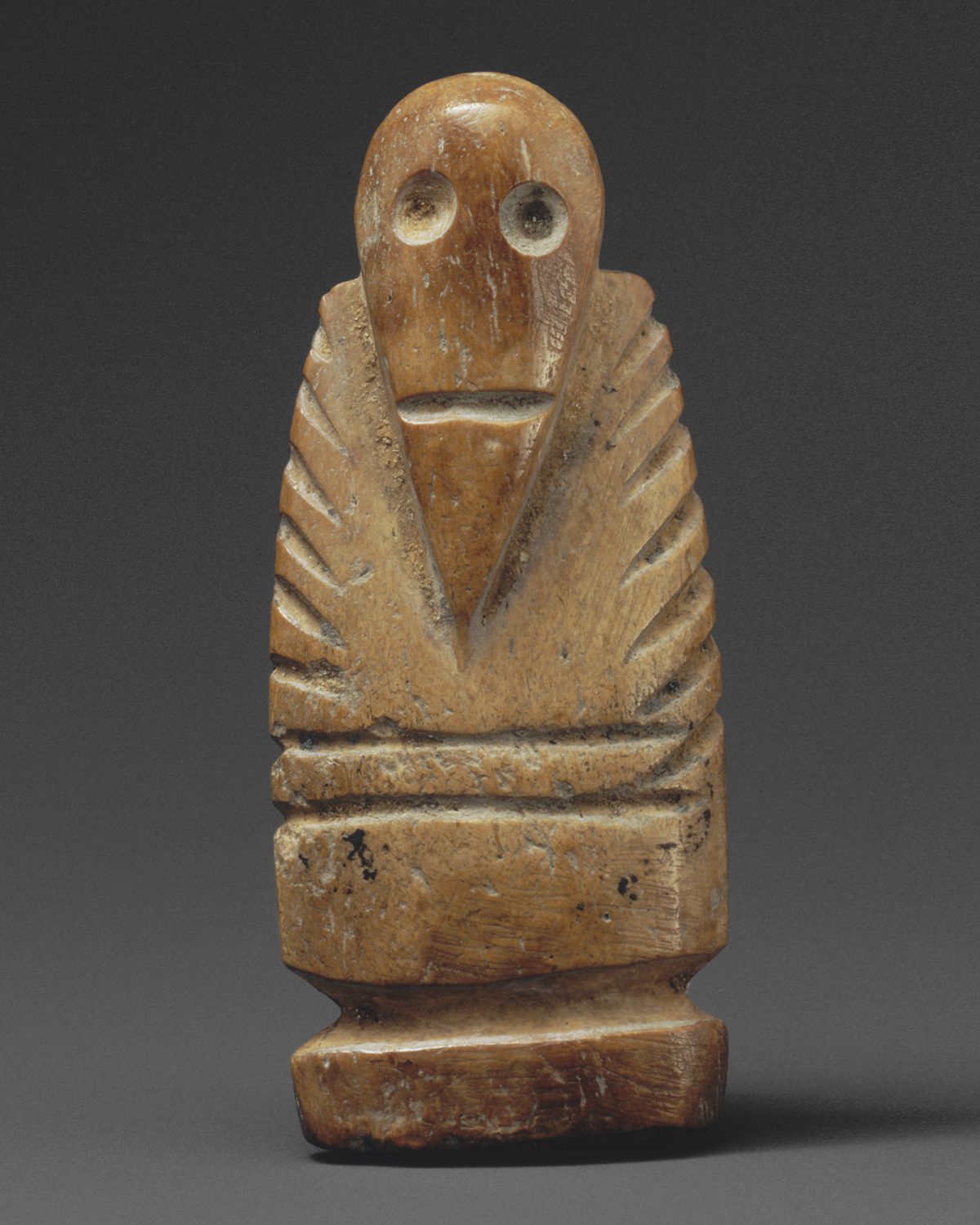Object of the Week: Amulet in Shape of A Human Figure
One way to get closer to a work of art is to begin to imagine the sounds that surrounded the artist as they created it. Two examples illustrating this are both amulets––objects charged with setting up a protective force field. The first is from ancient Egypt, among the oldest objects on the 4th floor galleries, and the other is one of the newest, which has been on view in the Jacob Lawrence Gallery on the 3rd floor since December of last year.
A carver living in Naqada long ago would reside on the west bank of the mighty Nile river. If he was an early riser, and close enough to the river, he would be likely to hear the most aggressive creature in his midst: the hippopotamus. Hippos let loose with a roar each morning at sunrise, and again at sunset. When gathered in groups, hippos vocalize all day with loud exchanges that help alert humans to their presence. This behavior is helpful, since to startle or challenge a hippo is a dangerous mistake, as they harbor an unpredictable power to outrun a human in short distances, overturn boats, and open their mouths to reveal their ultimate weapon––enormous teeth. Hippo canines are up to one-and-a-half feet long, and the carver of this amulet took just a tiny sliver from one to create an image of a man less than 2 inches tall. In this amulet, the carver captures a man’s form in a compelling abstraction––he has a long triangular beard and piercing eyes, all the better to watch over the owner, placed in a burial to ensure the deceased had a safe, healthy, and productive afterlife.

Aaron Fowler lets us know immediately what sounds were behind him when he composed his enormous sculpted amulet suspended with a rope. It has the same shape as the logo of Death Row Records, which Rap stars such as Tupac, Snoop Dogg, and Dr. Dre all wore to show allegiance to the record company. Here, Fowler embeds his friend Debo in their musical pantheon. On one side, Debo is depicted incarcerated and in prison clothes, sitting on a flattened armchair, while on the other side he appears free in a djelaba (hoodie) that Aaron designed for him. Fowler frames his friend with electronic lights and an iconic musical form to make Debo Free into a painful and protective tribute.
– Elisabeth Smith, SAM Collections and Provenance Associate
